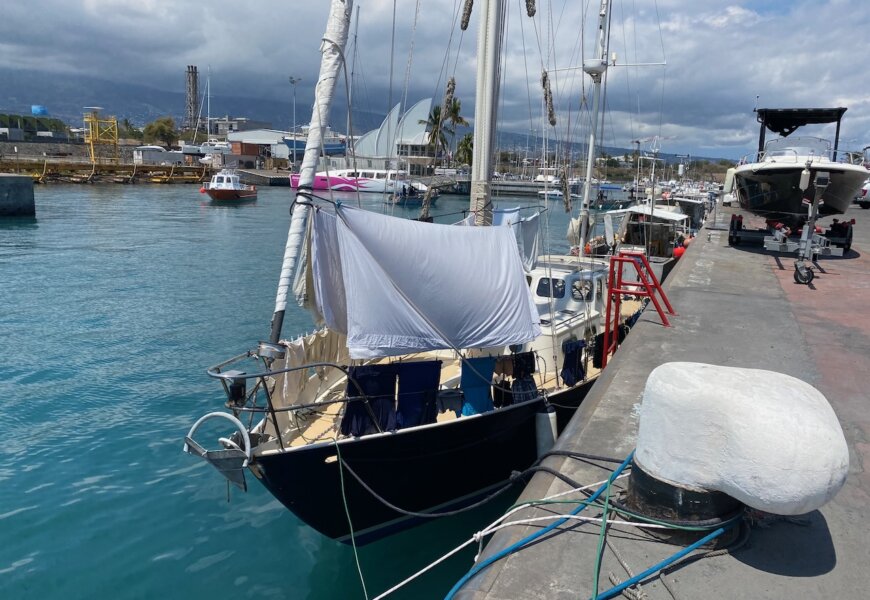
On the quay near the full marina
“I rolled the genoa. It’s a bit slower, but we’ll arrive in the daytime,” Ivar mumbles as he hands the watch to Floris at four in the morning. Exhausted, he disappears into the waiting cage. We only left Mauritius yesterday, so Ivar is not up to speed yet. Neither does Florida. He’s barely slept and stares dazedly from the cockpit.
We sail like this until countless lampposts show us the way to our next destination: Reunion. Above this unearthly glow, a menacing black figure emerges against the clear starry sky. The gigantic shape of the cone betrays the volcanic origin of this island whose highest peak culminates at no less than three thousand meters above the sea – which was a moment ago at a dizzying depth of four kilometers. The huge volcano is therefore even larger underwater than above. What natural forces will we find here?
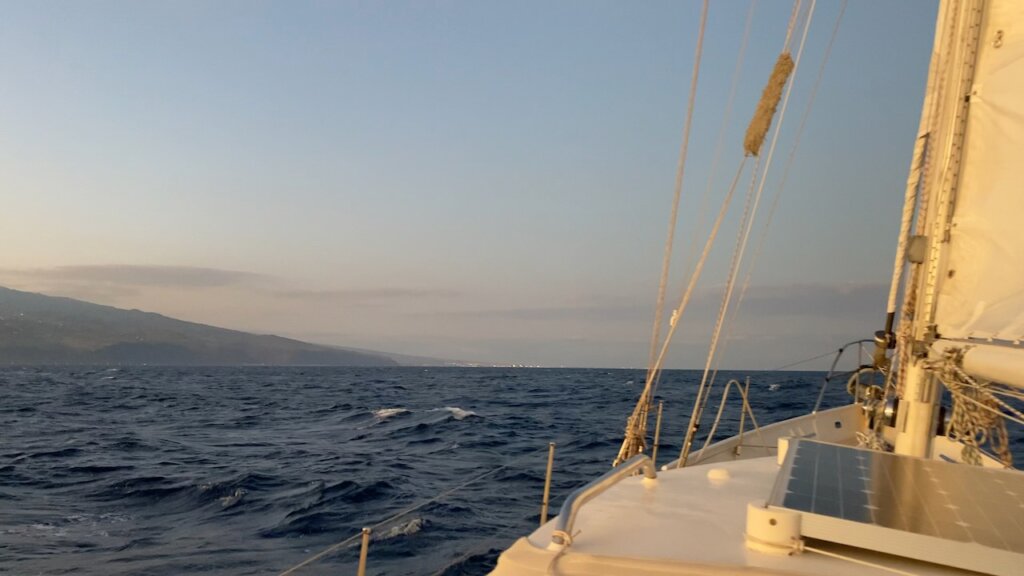
Reunion at the first light of the morning
French with a tropical twist
When it is daylight we are only a few miles from the port of entry which is appropriate Port is called. But then the momentum suddenly stops completely; the mainsail flaps lazily back and forth to the slow rhythm of the swell. We secretly hope that the wind will come back, but we know better: Lucia floats in the shadow of the island wind. Steep, dark green mountain walls rise above the coast and make Reunion look almost magical. “A kind of primitive landscape,” says Floris. He watches the lush scene as we calmly enter the harbour.
Because the island is a sea department belongs to France, and is therefore officially French territory, Floris reports to us in French at the service of the port. We receive a very friendly welcome and are allowed to moor at a quay next to the full marina. Reunion is part of the European Union, so checking with the authorities is not really a problem. Once on land, you can imagine yourself in France. From the language, the bakers and the cars, to the fonts and colors of road signs: every bit as French as it gets. And of course all prices are in euros. At the same time, it feels exotic due to its tropical landscape, high temperature, and mixed population. It’s a colorful mix of European and local French, Indians and Creoles – who in turn are an ancestral mix of Africans, Asians and Europeans.
Crater as shelter
During an excursion inside, we learn more about the turbulent history of Reunion. We start on a highway that goes around the whole island, after which we cross a valley with vertical rock walls on both sides that close the interior almost hermetically. Behind hides one of the three circus: craters formed after the collapse of parts of the volcano. The instance we are visiting – Circus of Mafate – is only accessible after an hour’s walk on an endless winding path.
Due to the heat, we choose the lazy option to get to the viewpoint: driving. The route takes us on steep, narrow roads through small villages and grassy meadows full of cows. It becomes steeper and steeper and hairpin bends follow one another quickly. He panoramic point stands on the edge of a precipice. Below us it falls vertically and a beautiful circular valley unfolds. The walls are bright green and waterfalls plunge into the depths; all under the watchful eye of the highest peak of the mountain. We look around breathlessly. We try to imagine what natural forces shaped this landscape.
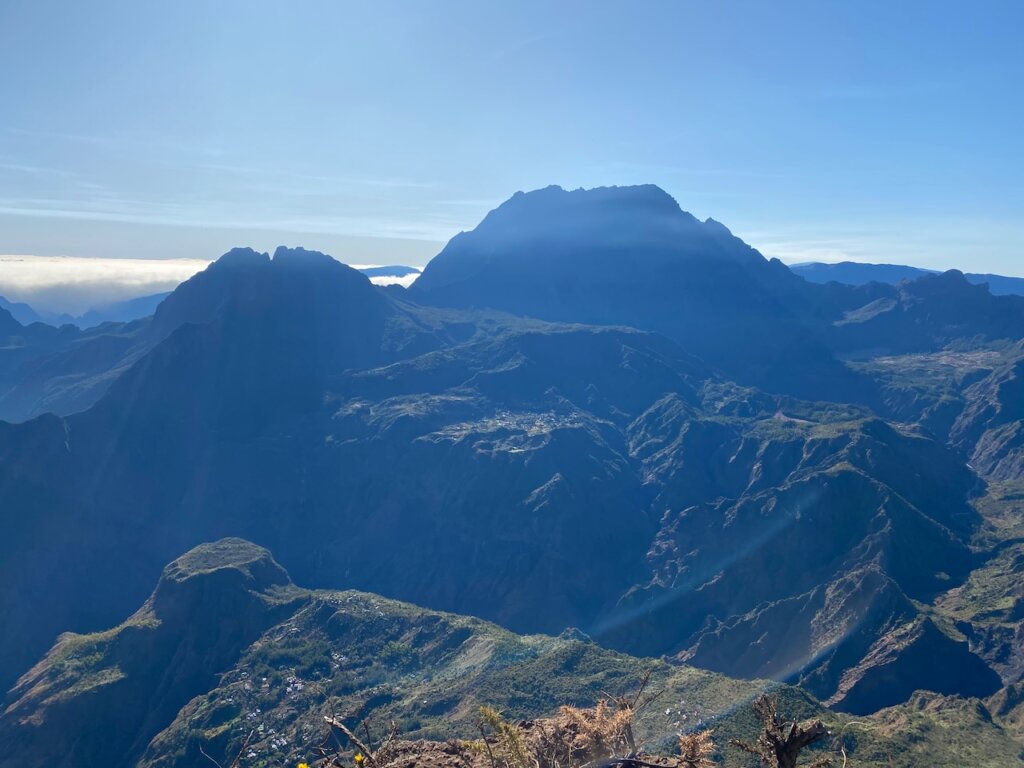
Breathtaking view of the Cirque de Mafate
Until 19e century, French settlers employed enslaved Africans on the sugar cane plantations. Those who managed to escape this ordeal of existence hid in this inaccessible valley. The contrast between the misery of the past and the overwhelming natural beauty could hardly be greater. After the abolition of slavery, many remained here, safe in their valley. Between the green we see small houses with solar panels and vegetable gardens around them. The fact that locals still have to walk for hours to get to the rest of the island apparently doesn’t outweigh the sense of freedom they get here.
We never tire of this beautiful region and also visit the other two circus. It is full of special plants, waterfalls, views and picturesque villages. During walks we marvel at the wild and capricious landscapes formed here by volcanic eruptions.
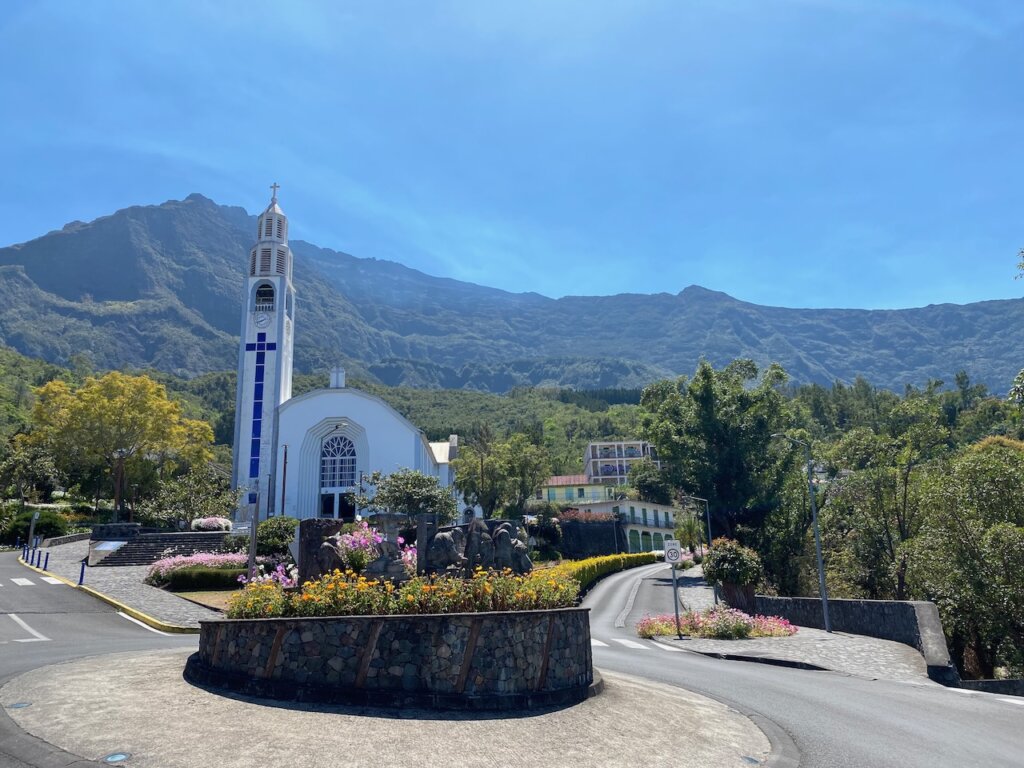
Picturesque inland villages
A fireworks display with potential?
Past and present meet on the south side of the island. At Piton of the Fournaise the forces of nature are always active. Long before reaching the summit, we see the influence of the volcano on the landscape. No trees or plants, but all the more brown, gray and black rocks – pieces of lava from previous eruptions. A cloud of smoke rises in the distance; we are undeniably close.
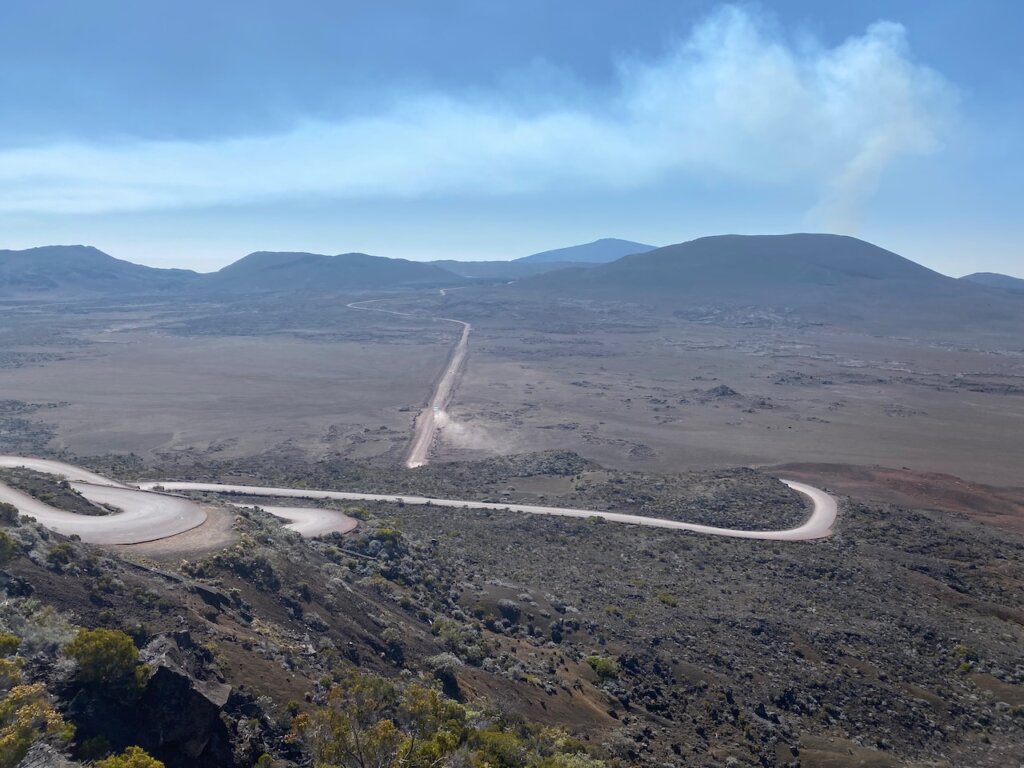
On the way to the active volcano
We park and walk through the rugged, deserted landscape. To best see this natural firework, we walk until signs and ribbons make it clear that we are really not allowed to continue. With an infernal noise, the crater continuously spits incandescent pieces of lava into the air, to cool there and then descend back to earth in the form of smoking black pieces. We watch breathlessly, still in awe as the lava fountain rises even higher. It was only after an hour that we had enough of the spectacle. “What geothermal heat here. Surely we could get a lot of renewable energy out of it? Ivar wonders as we return. “They know what to do with it in New Zealand,” Floris replies, thinking of our visit to a geothermal power plant there.
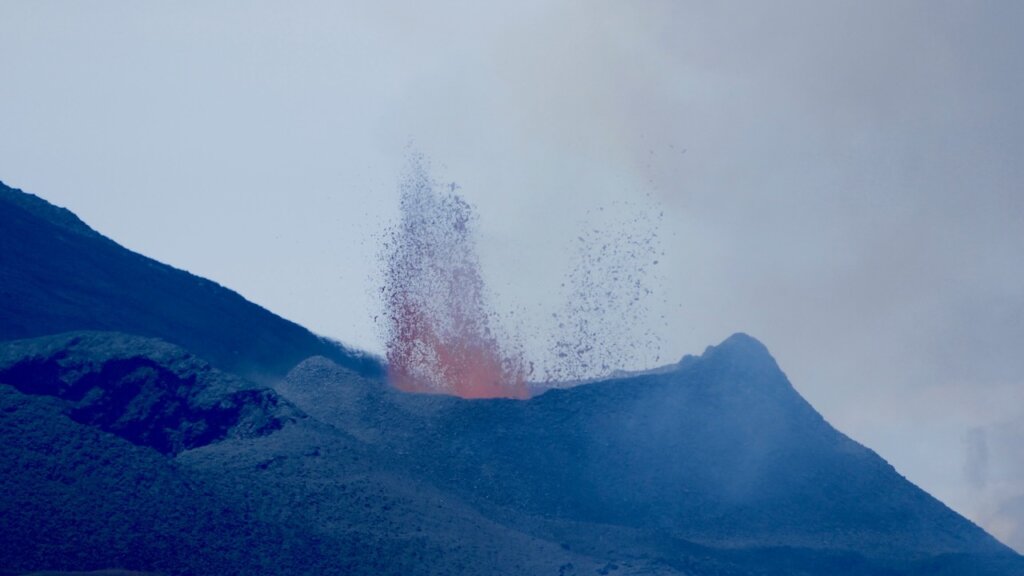
Spectacular natural fireworks
Difficult step
Back on board we barely have time to recover from all the impressions. Favorable weather forecasts provide opportunities we don’t want to miss. If we leave now, we’ll be in South Africa before hurricane season. The next leg to Richards Bay is perhaps the most difficult of our trip so far. At over 1,200 miles, that’s much longer than weather reports are reliable. One can also encounter a completely different type of natural force than in Reunion. There is a strong current on the east coast of South Africa which, combined with a depression, can cause potentially deadly monster waves.
At check out, casting off and hoisting the sails, we realize that we are a little more tense than usual. We ask Lucia heading south-west, with some 600 miles to go until the first waypoint – south of Madagascar. Would we be spared the destructive force of nature in these infamous waters?
More information? Look here for sustainable solutions and the nautical adventures of Sailors for Sustainability.
More leaving stories? Read all about Column Anna, Black Moon and watch Yndeleau’s vlog.
Tags: Sailors for sustainability Last modification: March 29, 2023
“Devoted bacon guru. Award-winning explorer. Internet junkie. Web lover.”
 DodoFinance Breaking News Made For You!
DodoFinance Breaking News Made For You!
